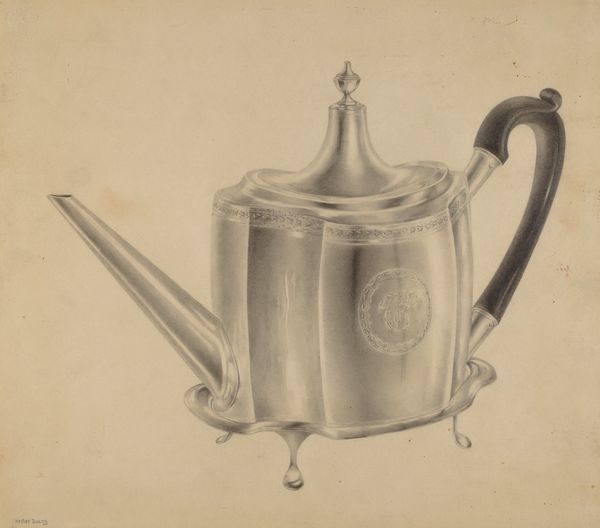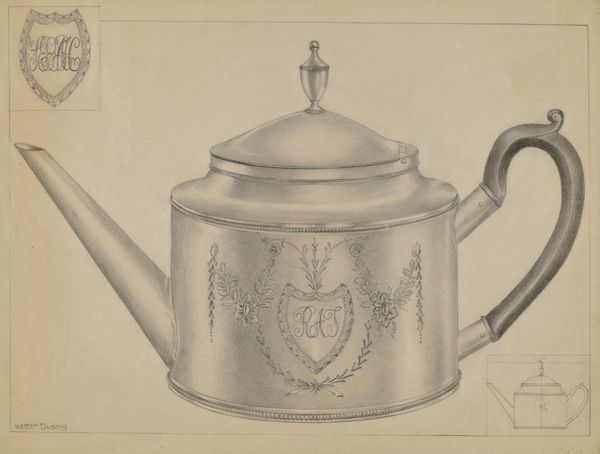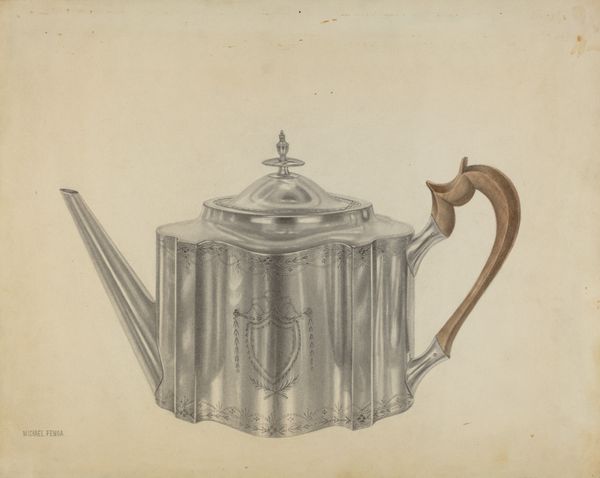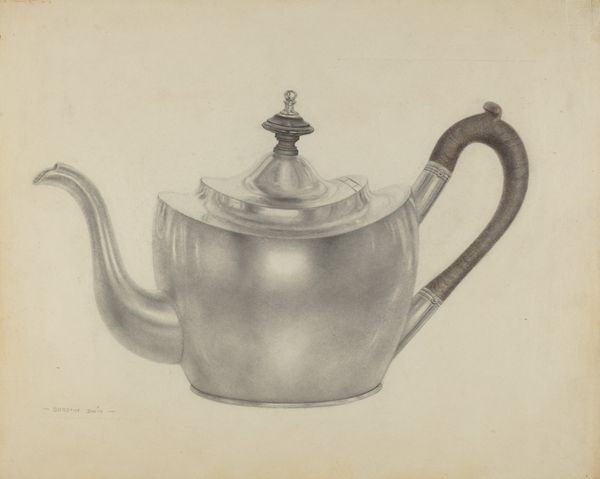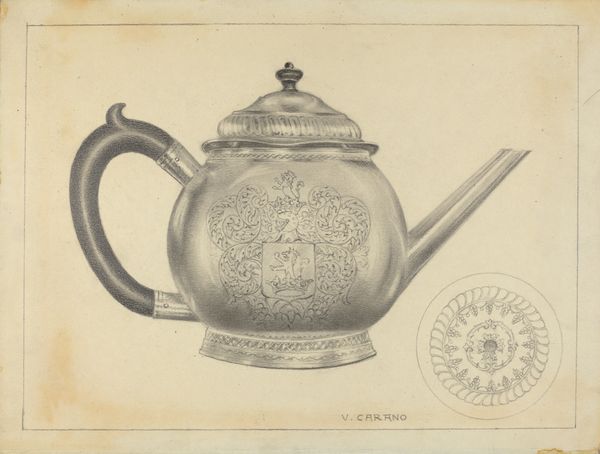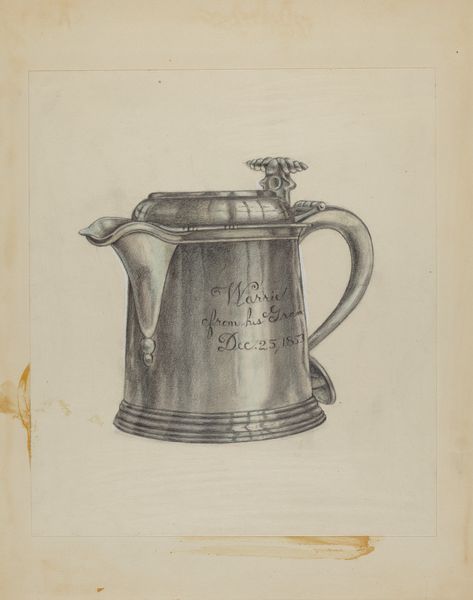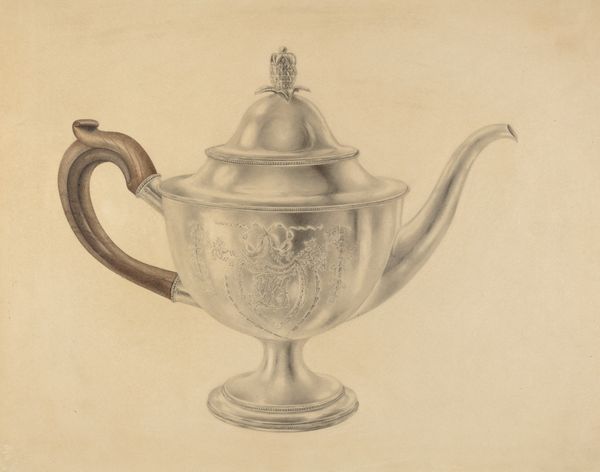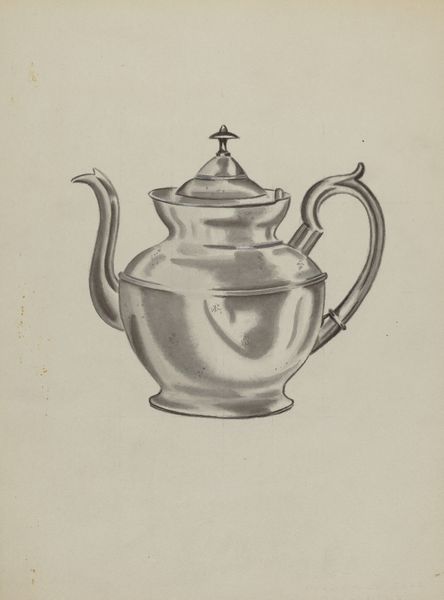
drawing, pencil
#
drawing
#
pencil drawing
#
pencil
#
decorative-art
#
realism
Dimensions: overall: 22.7 x 30.3 cm (8 15/16 x 11 15/16 in.) Original IAD Object: 6 1/2" high; 12 3/8" long; 4 1/2" wide
Copyright: National Gallery of Art: CC0 1.0
Editor: This is Simon Weiss’s "Silver Teapot," drawn around 1937 using pencil. The detail is striking – almost photographic. It gives me a sense of quiet domesticity. What catches your eye in this work? Curator: Well, let’s think about what this drawing represents. It's not just a teapot, but a study of the everyday object, likely meant for mass production, captured with careful observation and material specificity. Pencil, a readily available material, mimics the shine of silver. Why meticulously render a functional item? Editor: Is it elevating the everyday to high art, almost commenting on consumerism through detailed labour? Curator: Precisely. The choice of representing a manufactured object using the traditional medium of drawing raises interesting questions about the value placed on handcrafted versus mass-produced items, especially in the context of the 1930s. What would be lost if the drawing were replaced by the real silver teapot, or a photograph of one? Editor: That makes me think about how much labor goes into design, and how quickly those objects are consumed or discarded. I hadn't considered the critique of consumer culture before. Curator: The level of detail suggests not only the skill of the artist, but also a kind of fascination with the material world and its ability to reflect societal values. We’re not simply looking at a teapot; we’re examining the social life of things, made accessible through this precise drawing. Editor: I see that the means of production – both the teapot and the drawing – become central to understanding its meaning. Thanks for sharing your perspective; I will look at ordinary objects very differently now! Curator: My pleasure! Thinking about art in relation to material culture opens up exciting avenues for interpretation.
Comments
No comments
Be the first to comment and join the conversation on the ultimate creative platform.

